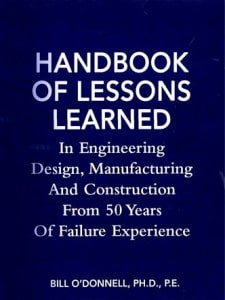
Providing Vibration & Fatigue Solutions on Equipment
Vibration, seismic, shock and fatigue troubleshooting, testing & analysis services on welded/equipment. Should issues arise, we design solutions – ensuring structural integrity, minimizing risk and controlling costs for owners/users.
Most equipment vibration problems are due to thermal, mechanical, acoustic, or flow related excitation – and if left unchecked, will cause fatigue and subsequent equipment failure, which may lead to greater repair costs.
Components vibrate at particular natural frequencies. These frequencies and resulting mode shapes are found using modal and vibration analysis. Often, simple analysis can be performed, while for more complex systems, finite element analysis is performed to determine the dynamic response.
Once Vibration and Thermal / Fatigue Issues are Identified, We Design Solutions to Ensure Structural Integrity. Examples Include:
- Troubleshooting, analysis and repair of rotating equipment including compressors, fans and shafts
- Vibration, seismic & fatigue analysis of piping, tanks, vessels, skids and welded structures
- Shock and vibration analysis of nuclear equipment in land-based and shipboard applications
Above – Vibration and Modal Analysis of an Industrial Impeller
Mechanical Engineering
- Seismic Analysis
- Shock Analysis
- Modal (Natural Frequency) Analysis
- Rotating Equipment Analysis
- Harmonic Analysis
- Fatigue Analysis of Equipment
- Fatigue Analysis of Welded Structures
Recent Projects
Thermal / Fatigue Design & Analysis of Equipment and Welded Structures
Fatigue Life Prediction of structures and systems ensures designs meet their requirements for safe-life or damage-tolerant design. Tom O’Donnell performs vibration, fatigue and failure analysis to ASME and other relevant Codes. Bill O’Donnell Sr. continues to serve as a Contributing Member of the ASME Boiler and Pressure Vessel Code Subgroup on Fatigue Strength – and has published numerous papers on fatigue and failure analysis. One such paper is Code Design and Evaluation for Cyclic Loading – ASME Sections III and VIII.
Fatigue of welded joints is a very complex problem. Simple procedures for fatigue properties of joints cannot be formulated. Additionally, during the welding process, residual stresses are created. The fatigue life of welded joints is mainly due to three factors:
- Notch effect due to weld filler metal
- Presence of welding imperfections
- Presence of residual stresses
Low Cycle / High Cycle Fatigue
Fatigue (from cyclic loading) is one of the most frequent causes of failure in pressure vessels, piping and process equipment. A vibrating component or system often leads to fatigue – which eventually leads to equipment malfunction, or catastrophic failure. Fatigue cracks usually initiate at the surface, and for this reason, the condition of the surface and the environment are important factors influencing fatigue behavior. Low cycle fatigue failures result when a material is stressed above its elastic limit. This is the limit a material my be stressed without permanent alteration of size or shape. High cycle fatigue failures occur under repetitive (e.g., cyclical, harmonic, and random vibration) stresses well below the yield strength of the material.
Fatigue analysis is performed per ASME Section III Class 1 and Section VIII Division 2. The fatigue design life evaluation procedures in Section III of the ASME Boiler and Pressure Vessel Code were originally developed in the U.S. Naval Nuclear Program.
Those involved were Bill O’Donnell, (Bernie) Langer, W.E. (Bill) Cooper and James (Jim) Farr – who, in the late 1950’s and early 1960’s developed the initial formulation of this technology in the Tentative Structural Design Basis for Reactor Pressure Vessels, which became known as “SDB-63.” Section III of the ASME Code “Vessels in Nuclear Service” was the first to include specific Code rules to prevent low cycle fatigue failure.
Examples Include:
- Compressors
- Welded Assemblies
- Supports
- Lifting Devices
- Petrochemical
- Manufacturing
- Aerospace
- Power Generation
- Military
- Pumps & Valves
- Rotors & Shafts
- Medical Equipment
- Electronic Equipment
We perform vibration & modal analysis – as well as fatigue, failure and fracture analysis on components for clients in industries including energy, manufacturing and (onshore / offshore) oil & gas.
Call to Discuss your Engineering Challenges.
Vibration & Fatigue Analysis Related Links
>> Tom O’Donnell, PE
>> Finite Element Analysis
>> Introduction to Fatigue Analysis
>> Portfolio of Engineering, Vibration & Fatigue Projects
>> Blog: Failure Analysis
Learn from the experience of others. Especially when one such “other” is Dr. William O’Donnell, PhD, PE, Founder and President of O’Donnell Consulting Engineers, Inc., and ASME “Engineer of the Year” – his 50 years of experience in analysis of components including fatigue and fracture safety evaluations and failure analyses are now comprised in this volume.
If you are interested learning more in Engineering Design, Manufacturing and Construction, as well as Failure Analysis, then this book is a must have!
$49.95*
* Does not include shipping, handling or tax




